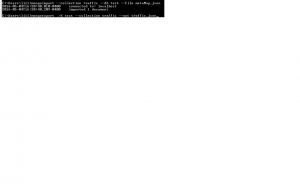In this post, I will document all basic for R and R programming.
Scenario 1, useful R introduction manuals and websites
Scenario 2, differentiating matrix and dataframe
A matrix is a two-dimensional data structure. All the elements of a matrix must be of the same type (numeric, logical, character, complex). A data frame combines features of matrices and lists. In fact we can think of a data frame as a rectangular list, that is, a list in which all items have the length length. The items of the list serve as the columns of the data frame, so every item within a particular column has to be of the samne type. However, different columns can be of different types. Matrix -- Dataframe
Scenario 3, how to combine two matrix by rownames
It seems easy and legitimate question, but not everyone knows it. I found one pretty decent solution
cbind.fill <- function(x, y){
xrn <- rownames(x)
yrn <- rownames(y)
rn <- union(xrn, yrn)
xcn <- colnames(x)
ycn <- colnames(y)
if(is.null(xrn) | is.null(yrn) | is.null(xcn) | is.null(ycn))
stop("NULL rownames or colnames")
z <- matrix(NA, nrow=length(rn), ncol=length(xcn)+length(ycn))
rownames(z) <- rn
colnames(z) <- c(xcn, ycn)
idx <- match(rn, xrn)
z[!is.na(idx), 1:length(xcn)] <- x[na.omit(idx),]
idy <- match(rn, yrn)
z[!is.na(idy), length(xcn)+(1:length(ycn))] <- y[na.omit(idy),]
return(z)
}
Scenario 4, I want to have a thorough note on apply function in R
There was a simple question on R apply function. Although it seems quite straightforward, it causes lots of confusion for people. Therefore, I decide to write a thorough document for this.
Scenario 5, Invoking R from the command line
Here gives a good example to invoke R from the linux command line.
Scenario 6, Use R to perform clustering and then produce a heatmap
Good example-by-mannheimia Example of savvi by Earl Glynn

